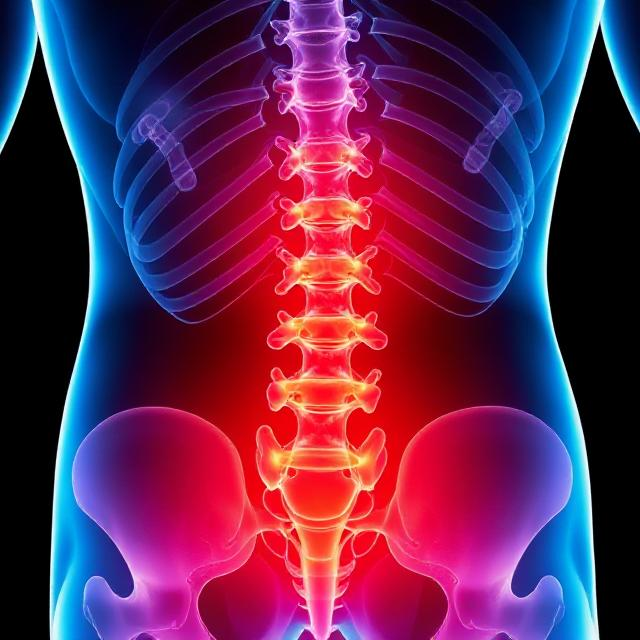How does Gonstead Chiropractic adjustment work


Gonstead Chiropractic adjustment is a type of Chiropractic treatment that uses a specific technique and analytical system to improve the alignment of the vertebrae by adjusting it manually. This technique is based on the principles of biomechanics and works by restoring the normal function of the spine and nervous system. In this article, we will explore how Gonstead Chiropractic adjustment works in a scientific way, the physiological changes that occur with the adjustment, the efficacy of the technique, and the latest research that validates the explanation.
Who is Dr.Gonstead?
Dr. Clarence S. Gonstead was a Chiropractor who developed the Gonstead System of Chiropractic, a method of Chiropractic care that focuses on a precise analysis and adjustment of the spine. He was born on July 23, 1898, in Willow Lake, South Dakota, and grew up in the town of Hartford. He graduated from Palmer College of Chiropractic in 1923 and started practicing in Mount Horeb, Wisconsin, in 1926. In the early years of his practice, Dr. Gonstead noticed that some of his patients were not responding to the traditional methods of chiropractic care. He began to develop his own system of analysis and adjustment, which he called the "Gonstead System." The system involves a thorough examination of the spine using x-rays and other diagnostic tools, followed by a precise adjustment of the spine using a hands-on technique.
Dr. Gonstead's reputation as a skilled and effective chiropractor quickly grew, and his clinic in Mount Horeb became known as a center for advanced chiropractic care. Patients traveled from all over the country to receive treatment at his clinic. In 1964, he opened a second clinic in nearby Madison, Wisconsin, which also became a center for advanced chiropractic care. Eventually, he set up the Gonstead Clinic in Mount Horeb which was housed in a large, three-story building that included treatment rooms, a waiting room, and administrative offices. The clinic had a staff of over 20 people, including chiropractors, medical doctors, nurses, and support staff with it’s own laboratory for analyzing x-rays and other diagnostic tests.
How does Gonstead Chiropractic adjustment work?
The Gonstead Chiropractic adjustment works by restoring the normal function of the spine and nervous system with a very thorough analysis accompanied by a specific adjusting technique. The system utilises methods of examination to analyse the Gonstead technique is based on a foundational principle. Every structure require a good foundation, just as the spine. Our spine can achieve its maximum balance and stability when the pelvis, vertebrae and legs are in a good level. Gonstead Chiropractic health care focuses primarily in correcting foundational unleveling, intervertebral misalignment, motion disturbances as well a nerve dysfunction. Intervertebral discs injury is of paramount importance in causing spinal subluxation, therefore the adjustments are designed for maximum affect to the discs to restore the normal alignment and motion of the spine.
The Gonstead chiropractic assessment incorporates various examination methods to thoroughly analyse several factors. Its aim is to effectively identify the main characteristics of intervertebral disc lesions, assess the alignment of intervertebral discs, the entire spine, and pelvis, and evaluate the neurological effects of vertebral subluxation on overall body health.
Gonstead technique involves a specific method of analysis and adjusting the spine, which rely on a strict protocol involving 5 steps to identify the problem.
The five steps of analysis in the Gonstead Chiropractic system are as follows:
Visualization
During the visualization step, the doctor observes patient's posture, the shape of the bony prominent, skin conditions and movement. This visual assessment helps to identify any visible asymmetries, abnormalities and other indicators of misalignment.
Static Palpation
The chiropractor uses their hands to palpate or feel the patient's spine and surrounding tissues while the patient remains still. This step helps to locate areas of tenderness, swelling, muscle tone imbalances, or abnormal texture that may indicate subluxations.
Motion Palpation
With motion palpation, the chiropractor evaluates the mobility and motion of each individual spinal segment. By applying gentle pressure and assessing the range of motion, they can identify any restricted or dysfunctional joints.
X-ray Analysis
X-ray analysis is an essential component of the Gonstead system. It allows the chiropractor to visualize the patient's spine in detail, including the position, alignment, and condition of the vertebrae. X-rays aid in identifying subluxations, disc conditions, or other structural abnormalities that may require specific adjustments.
Instrumentation
The final step involves the use of specialized instruments, such as a Nervoscope or a Gonstead Adjusting Instrument. These instruments help the chiropractor assess temperature variations, muscle tone, and nerve conductivity in the spine, providing additional information to guide the adjustment process.
By utilizing these five steps of analysis, Gonstead chiropractors aim to gather as much information as possible about the patient's spine and overall condition. This thorough assessment helps them identify specific areas of subluxation or dysfunction, allowing for precise and targeted adjustments to restore proper alignment and enhance the body's natural healing abilities.
What are the physiological changes that occur with Gonstead chiropractic adjustment?
Gonstead chiropractic adjustment produces several physiological changes in the body. The adjustment can help to:
Restore joint motion
Misalignments in the vertebrae can cause restricted joint motion. Gonstead adjustment helps restore normal joint motion, improving flexibility and reducing pain by identifying and setting the bone back to the optimal position effectively.
Reduce inflammation
Misalignments in the spine can cause inflammation in the surrounding tissues. Adjustment can help to reduce inflammation, improving healing and reducing pain by simply reducing nerve irritating and joint pressure.
Stimulate the nervous system
The Gonstead adjustment can stimulate the nervous system, improving communication between the brain and the body. This can help to improve overall health and wellbeing.
What is the efficacy of Gonstead chiropractic adjustment?
There is many studies shows efficacy the of Gonstead chiropractic adjustment. Patients all over the globe report significant improvements in their symptoms following treatment, it is a very safe, and effective treatment.
In a recent study published in the Journal of Chiropractic Medicine, researchers found that Gonstead chiropractic adjustment was effective in reducing pain and disability in patients with low back pain.
The study also found that the effects of the treatment were long-lasting, with patients reporting significant improvements in their symptoms at the six-month follow-up.
Another study published in the Journal of Manipulative and Physiological Therapeutics found that Gonstead chiropractic adjustment was effective in reducing pain and improving function in patients with chronic low back pain.
Conclusion
Gonstead chiropractic adjustment is a safe and effective technique for treating a range of musculoskeletal conditions. The adjustment works by restoring normal joint motion and alignment, reducing inflammation, and stimulating the nervous system. While limited scientific evidence exists on the efficacy of the technique, many patients report significant improvements in their symptoms following treatment. The latest research supports the effectiveness of Gonstead chiropractic adjustment in reducing pain and improving function in patients with low back pain.



